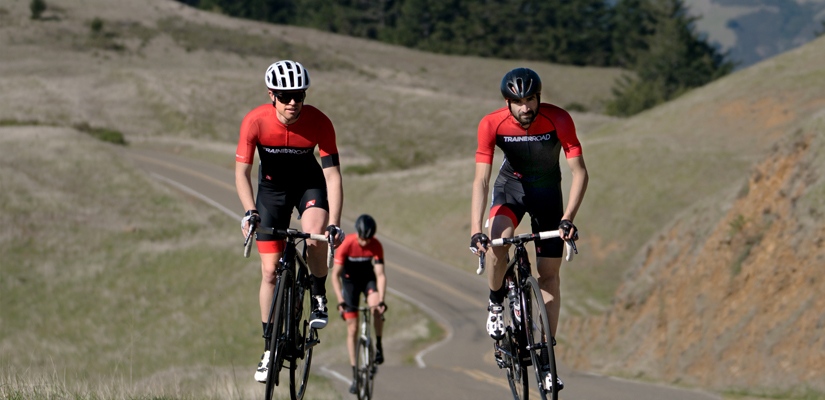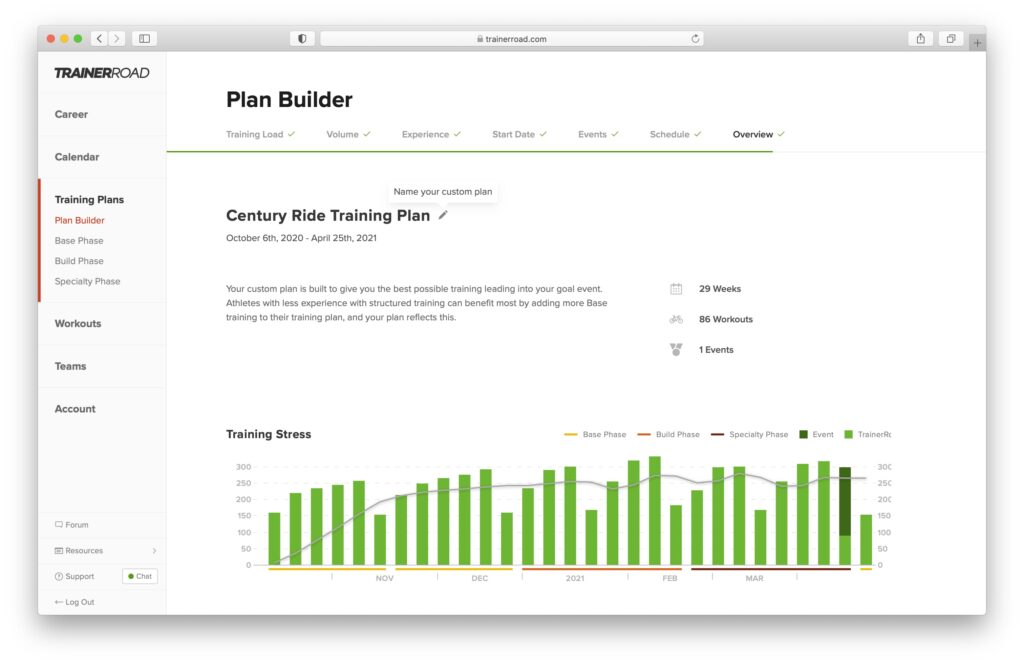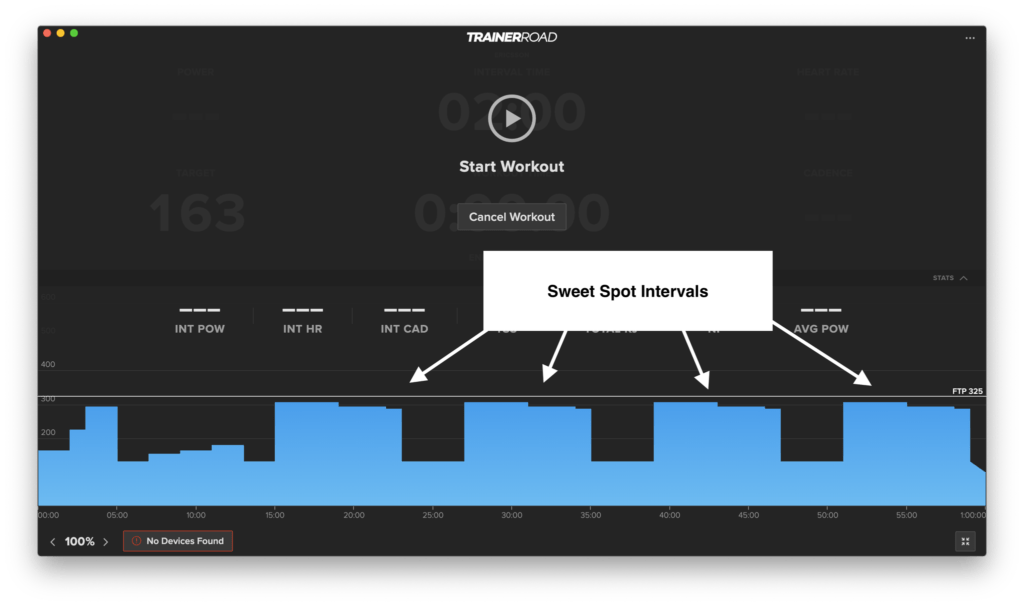Training for a Century: Be Prepared for Your First 100 Mile Ride

Taking on a century ride can be a daunting task, especially when it’s your first. But with the right century training plan, you’ll be ready for the long haul. With these training tips and tricks, you can feel confident that you’ve got the necessary information to nail your first 100-mile ride.
For more information on how to train for a century ride, check out Ask a Cycling Coach Ep 254.
Table of Contents
What is a Century Ride?
A century ride is a road cycling event or training ride that is 100-miles long. Most of them are mass-start events, meaning that cyclists start the century together but are free to complete the hundred-mile course at their own pace. Centuries can be competitive events, but most are social rides that offer athletes a chance to come together and tackle a big day in the saddle.
How Long Is a Century?
While the standard century ride is 100 miles, most events offer multiple distance options ranging anywhere from thirty to a double century (two hundred miles!). Another type of century ride is a metric century, one hundred kilometers or just over sixty-two miles.
The time it takes to complete a 100-mile ride can vary greatly depending on several factors. Things like the course profile, weather, and the other cyclists you’re riding with, will all affect how long it will take. Typically, you can expect to spend at least five hours in the saddle. While that’s a long time, organized centuries usually have aid stations stocked with food and drinks.
Adaptive Training
Get the right workout, every time with training that adapts to you.
Check Out TrainerRoadWhat’s the Difference Between a Century Ride and a Gran Fondo?
Centuries and Gran Fondos are very similar, so much so that the two have almost become synonymous. Gran Fondos are semi-competitive events that are timed or include time sections but aren’t necessarily 100-miles long. However, training for a century ride or Gran Fondo is the same. It’s all about developing your aerobic fitness and endurance.
Training for a Century Ride
You don’t need to be an experienced cyclist to ride 100 miles. Any athlete can take on the challenge by completing a well-structured century ride training plan. The most efficient and effective way to train for a century is to complete high-quality structured workouts strengthening the energy systems needed for such a long ride.
A century ride is more or less one long sustained effort. Sure, there will be times during the ride when you’ll need a short burst of high power, but for the most part, there are two critical ingredients for cruising for 100 miles. The best century training plans will develop your aerobic energy system and increase the fatigue resistance of your muscles. Essentially, that means increasing your FTP and muscular endurance.
Training for a 100-mile bike ride should occur over three distinct stages. First, you’ll want to build your aerobic base fitness to establish a foundation. This is called the Base Phase and is dedicated to increasing the work your muscles can accomplish using oxygen without contribution from the anaerobic energy system.
Once you’ve established a strong foundation, your century training plan will proceed to the Build Phase. With an emphasis on challenging, goal-specific workouts, the Build Phase aims to raise your threshold power, improve repeatability, and increase work capacity for the specific demands of your 100-mile ride. Finally, you’ll finish your century ride training plan with the Specialty Phase. During this phase, the workouts shift their emphasis from building further fitness to honing your established fitness into its most event-specific form.

If that sounds a bit overwhelming, don’t worry! You can use Plan Builder to build a custom century training plan. Plan Builder will automatically create a century ride training plan around your schedule, experience, and available training time. To start, enter your event date, classify it as a Gran Fondo, and Plan Builder will do the rest.
Century Training Plan Progression
Many cyclists assume that the best way to train for a century is to complete long endurance rides. While this approach can work, it requires a lot of time—12-20 hours per week. You don’t have to do extremely long training rides to prepare for a century ride. That said, it’s a good idea to throw in a long ride before your event to check your bike fit and nutrition strategy.
For the Base Phase, we recommend Sweet Spot Base for most cyclists, unless you have a lot of time to train. TrainerRoad’s Century Training Plan can get you ready for your 100-mile ride in a little as 3-4 hours per week. This phase has two parts, each lasting six weeks. For more about Sweet Spot training, check out: Sweet Spot Training: Everything You Need to Know.
Next up in your century ride training plan is the Build Phase. For long endurance events, we recommend Sustained Power Build. These training blocks emphasize greater sustained power through strength endurance, lactate tolerance, and VO2 Max workouts.
Example Interval workouts
The Century Training Plan plan follows a specific series of workout progressions. That means you’ll start with shorter intervals that will help ensure that you can finish the workout while hitting your power targets. As you work through the progressions, you’ll grow your fitness and FTP. Over time, the intervals will become longer, more intense, or both.
TrainerRoad’s workouts are designed to make the most of your time and hard work with power-based interval workouts. Every TrainerRoad workout begins with a warm-up to prepare your body for the upcoming work. After the warm-up, you get a short period of rest before jumping in the first interval.
In this example, we are looking at Ericsson. It’s an hour-long Sweet Spot workout. Each interval is 8 minutes long. During that time, you’ll stay between 88-94% of FTP. After the interval, you’ll get a 4-minute rest. Over the hour, you’ll complete four sets, and you’ll finish with a cool-down.

How Long Does It Take to Train for a Century Ride?
The length of time you need to prepare for a 100-mile ride depends on your experience and current fitness level. If you are new to cycling, you may need more time than someone that’s been riding for a few years. At a minimum, you’ll want twelve weeks to complete base training for a century. Of course, the more time you have, the better. We recommend 28 weeks and completing the entire century training plan. That way, you’ll be a peak fitness for your event.
How to Pace a Century
The amount of time it will take to finish a century depends on your event. A century with a lot of climbing, bad weather, or high altitude could skew a time goal. This is why we recommend building a power-based pacing plan instead of a time-based pacing plan. If you have a power meter on your bike, a good pace would be maintaining an Intensity Factor (IF) of 0.70 or 0.75 during your century. IF is a percentage of your Functional Threshold Power (FTP). In other words, ride at 70% of the power you can maintain for an hour.
If you don’t have a power meter, no worries. A rate of perceived exertion (RPE) based pacing plan works great too. The right RPE might vary, but generally maintaining an RPE of 6 or 7, on a scale of 1-10, is appropriate for a century. You’ll become familiar with how RPE 6 and 7 feel during your structured workouts.
What’s more important than maintaining a certain pace is doing your best not to ride above the set pace. Riding above your threshold becomes exponentially more demanding and brings an exponential energy cost. It also means that fatigue can ramp up very quickly. If you’d like to build your own pacing plan, check out How to Build a Pacing Plan for Long Events.
What is a Good Century Ride Time?
The amount of time it takes to complete a 100-mile ride will depend on all the factors listed above. But generally, anything under five hours is considered fast. For a century with lots of climbing, a good time might be in the six to seven-hour range. That said, completing a century, no matter the time, is an accomplishment!
Ride With a Group!
Whether or not you have a pacing plan, riding with a group is a great way to pace a century. Try and find a group of people that are pushing a pace you find sustainable. The social aspect can boost morale and become a welcoming distraction to the growing sense of discomfort. It also offers you a chance to catch the occasional draft and take a break from setting the pace.
No man’s land can be tough. That’s the area between two groups of cyclists. If you find yourself riding alone, try hanging back and joining a group or another solo rider. The time it takes to wait for a group will be well worth it. The mental and physical advantages that come with being able to draft and ride with a companion are super helpful. Chances are any other athlete who’s riding solo could use a friend to ride with as much as you, and chances are, you won’t be the last rider on course.
Limit Your Time at Aid Stations
Aid stations are both a blessing and a curse. Aid Stations offer athletes a chance to stop, take a break, stretch their back, and fuel up. It’s also a place where athletes will cool down completely if they’re not careful. Stopping and starting can be the most challenging part of a century. Upon restarting, your legs won’t feel eager to get back up to pace. To avoid this common pain point, try limiting your time at aid stations, and only stop when necessary. The longer you wait, the harder it will be to get back on the bike.
Century Ride Packing List
- A seat bag with a multitool, extra tube, and a mini-pump or co2 inflator.
- Plenty of food in case you don’t like what’s offered at the aid stations
- Water bottles, helmet, sunglasses, and shoes—if you have clipless pedals
- A floor pump for before the ride
- Sunscreen
- Clothes to change into after the ride
- Ride map or GPS head unit with the course loaded on it
Nutrition and Hydration
Before: Fuel and hydrate well in advance of your event. The food you eat in the days leading up to your event can have any impact on your big ride. In the two days before your ride, make sure you eat enough nutritious foods, a diet rich in carbohydrates, hydrate sufficiently, and rest adequately.
During: Your nutrition during a long event should be proactive. Don’t eat when you think you’re feeling run down. Eat and drink proactively, so you don’t become run down. Try setting a timer on your head unit or phone that goes off every fifteen to thirty minutes. When your timer goes off, take in fuel and check how much water you’ve taken in since your last timer.
Depending on the event, there will probably be lots of aid stations. While aid stations might have a lot of good fuel, don’t plan to rely solely on the aid stations. Bring enough gels, bars, and snacks to make it through the century on your own. In the event that nothing at the aid stations interests you or agrees with your stomach, you’ll always have your backup fuel.
If you do end up eating at the aid stations, which works for a lot of people, be wary of what you eat. Something that agrees with you off the bike may not agree with you on the bike. If you want to get a feel for your body’s response to different foods, experiment with your nutrition during training. Try eating a variety of solid foods on long training rides to see how your stomach responds. For more on what to eat and drink, check out How to Use Carbs for Maximum Performance and What to Drink When Cycling.
5 Tips for Your Century Ride
- Go over your bike. A week before the ride, make sure your bike is in top shape. Check to make sure your tires aren’t too worn and that your gearing is appropriate for the route.
- Examine the route. Look over it to find out elevation gain, technical descents, and high traffic areas. Don’t forget to load the course on your GPS head unit.
- Start at your pace. The beginning of a century ride is exciting, and it’s easy to go out too hard. Ride within yourself for the first few miles, then find a group that’s at your pace.
- Pay attention. You’ll probably be riding with cyclists you’re unfamiliar with, so stay focused for safety and callout objects and potholes in the road.
- Get some sleep. Quality sleep the night before will go a long way in making sure you’re fresh and ready to take on your century.
Common First Century Mistakes
It might seem like a lot can go wrong during a century. The good news is that most century ride mistakes are easily avoidable. Miserable centuries happen when athletes don’t fuel enough, stop too long, aren’t mentally prepared for the day’s difficulty, and go too hard at the start. You can avoid common errors with a well-structured training plan, prepared and proactive nutrition, a good pacing plan, and a positive attitude.
For more cycling training knowledge, listen to Ask a Cycling Coach — the only podcast dedicated to making you a faster cyclist. New episodes are released weekly.